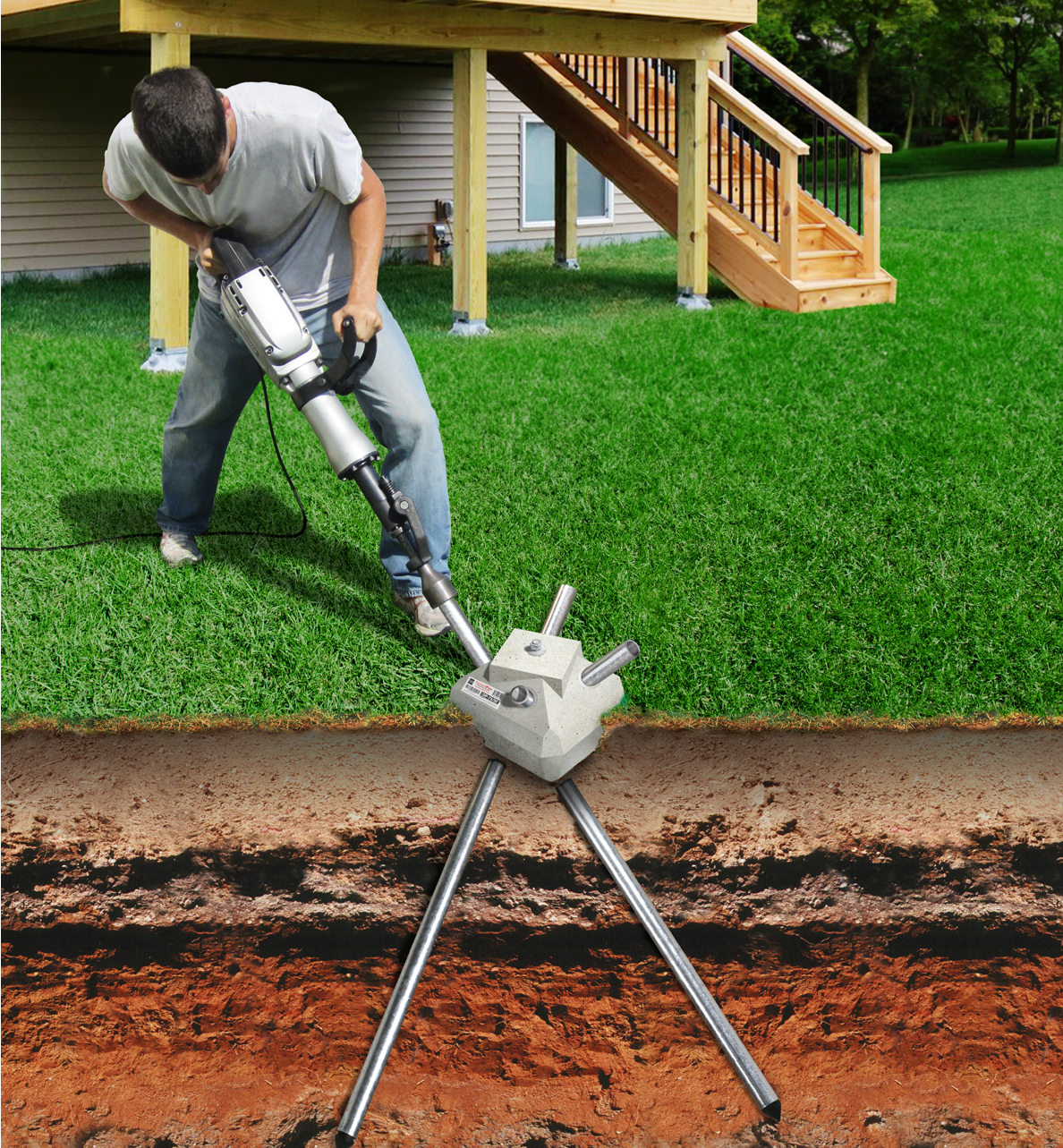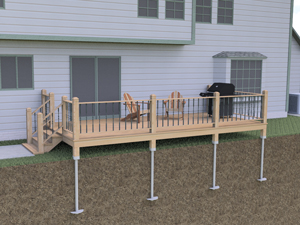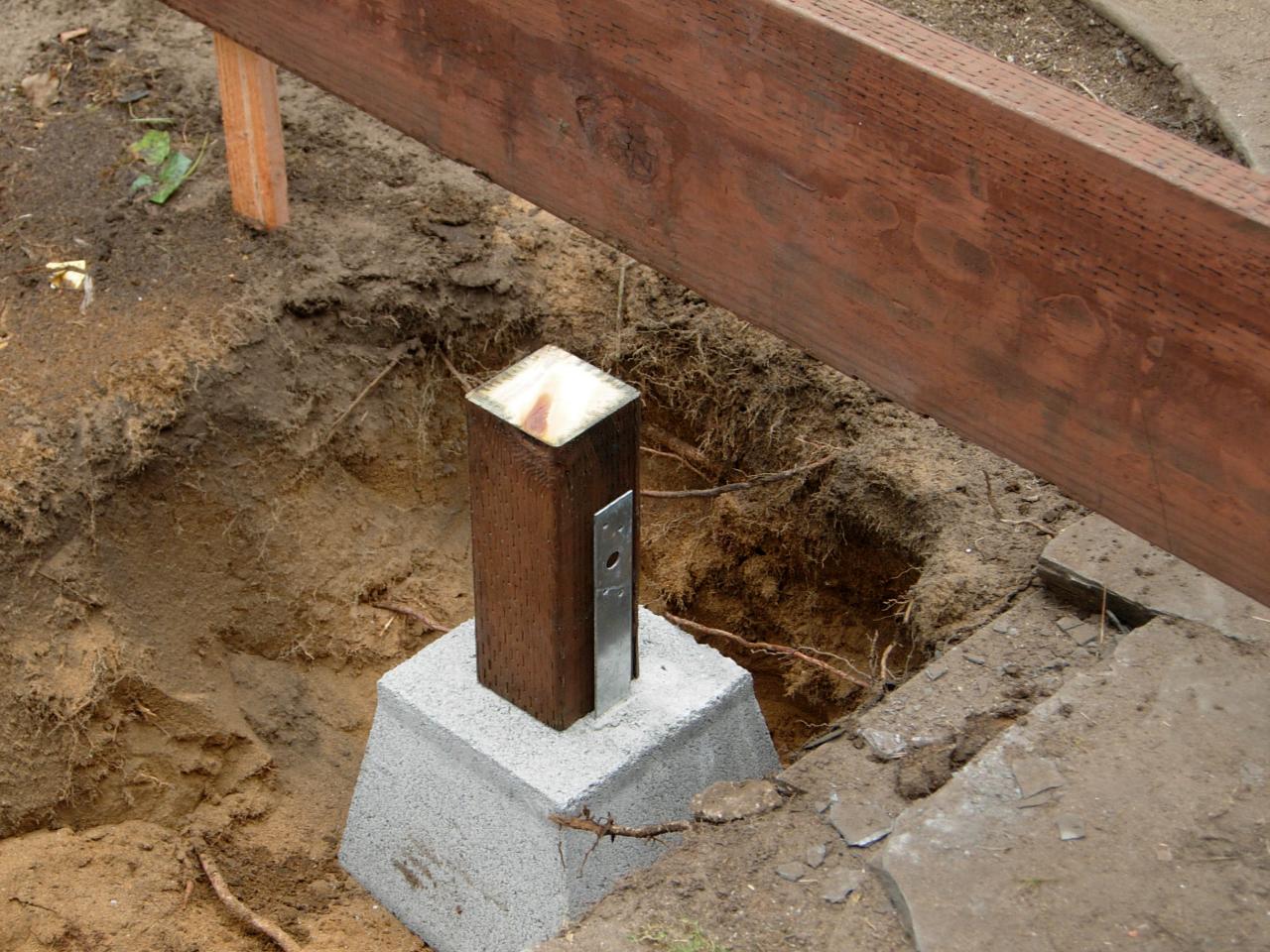Expert Tips for Installing Deck Footings to Assistance Your Outdoor Area
When it comes to building a deck, one of the most vital components to think about is the setup of proper grounds. These footings are the foundation upon which your outside room will certainly rest, providing stability and support for years to come. What exactly does it take to mount deck footings properly?
Importance of Appropriate Deck Footings
Proper deck footings are important for making sure the stability and durability of your outdoor room. Without solid and correctly mounted grounds, your deck might end up being unstable, leading to safety risks and pricey fixings.

Along with security, proper deck grounds likewise contribute to the long life of your outside space (Deck Footings). Grounds that are created and constructed to hold up against the components and soil conditions in your location will assist stop the deck from shifting or resolving gradually. By making sure the footings are effectively sized and set up, you can minimize the danger of damage to the deck framework, extending its life expectancy and reducing the demand for expensive repairs or replacements

Choosing the Right Sort Of Grounds
When choosing the ideal sort of footings for your deck, it is essential to think about elements such as soil conditions, local building ordinance, and the overall design of your outdoor room. The sort of footing you choose will certainly play an essential duty in guaranteeing the stability and long life of your deck.
One common kind of ground is the concrete ground. Concrete footings appropriate for the majority of dirt conditions and offer exceptional assistance for decks. They are generally installed listed below the frost line to protect against changing and settling due to freezing and thawing cycles. An additional alternative is helical piers, which are ideal for areas with unstable soil or high water tables. These piers are screwed right into the ground and offer solid assistance for the deck.
In some situations, you might need to use specific grounds, such as stack footings or deep foundations, if you are building a multi-level or big deck. These footings are developed to distribute the weight of the deck over a bigger location, ensuring stability and preventing sinking or working out.
Prior to picking a kind of footing, it is important to seek advice from regional building regulations and guidelines to guarantee compliance. In addition, take into consideration the layout and meant use of your exterior area. Elements such as the size, shape, and load-bearing needs of your deck will affect the sort of footing that is most appropriate.
Preparing the Ground for Footing Setup
To properly prepare the ground for footing installment, it is very important to assess the dirt problems and take needed steps to make sure stability and sturdiness of the deck. The very first step is to dig deep into the area where the footings will be mounted. The depth of the excavation will certainly rely on the frost line in your area and the specific demands of the deck layout. It is necessary to eliminate any kind of plants, rocks, or debris from the excavation to make sure a solid foundation.
As soon as the location has actually been dug deep into, the next step is to portable the soil. This can be done utilizing a plate compactor or by utilizing a hand tamper. Condensing the soil helps to get rid of any type of spaces or air pockets, which can bring about settling and instability with time.
After compacting the soil, it is necessary to lay a layer of crushed rock or crushed stone at the end of the excavation. This will provide drain and aid to avoid water from pooling around the grounds, which look these up can lead to erosion and instability.
Step-by-Step Guide to Putting Up Deck Footings
After properly preparing the ground for footing installment, the following action is to start the process of installing deck grounds. This step-by-step guide will certainly offer you with a clear understanding of just how to mount deck grounds for your exterior area.
Figure out the area: Beginning by marking the settings of the deck grounds making use of risks and string. Ensure that the locations line up with the layout and format of your deck.
Dig the openings: Make use of an article opening digger or an auger to dig the openings for the footings. The depth and diameter of the holes ought to be in conformity with local structure codes and the particular demands of your deck style.
Level the openings: Utilize a level to guarantee that the openings are dug to the appropriate depth and are degree with each various other. (Deck Footings)
Include crushed rock: Place a layer of gravel at the end of each hole to boost drainage and avoid the timber from decaying.
Insert the footings: Position the footings into the openings, making certain they are degree and plumb. Utilize a level and a determining tape to ensure accuracy.
Secure the footings: Pour concrete into the holes around the grounds, loading them to the top. Make use of an article degree to ensure the grounds remain degree as the concrete sets.
Enable time for healing: Allow the concrete remedy according to the producer's instructions before continuing with the deck construction.
Usual Errors to Prevent During Footing Installation
One important element to think about throughout the setup of deck footings is preventing common errors that can compromise the security and longevity of your outdoor area. While deck footings might look like a easy and uncomplicated part of the building and construction process, neglecting specific elements can cause expensive repairs and prospective security threats down the line.

In addition, ignoring to mount appropriate drain steps can create water to gather around the footings, leading to rot, degeneration, and the eventual weakening of the deck's structure. In addition, using the incorrect kind of footing material or failing to adequately secure the grounds can endanger their structural stability.
To prevent these errors, it is necessary to seek advice from a specialist or follow industry standards to make certain proper footing installation. By doing so, you can Discover More make certain the stability and longevity of your outdoor space, supplying a pleasurable and risk-free setting for many years ahead.
Final Thought
To conclude, setting up appropriate deck footings is critical for the security and durability of your outdoor area. By picking the ideal kind of footings and appropriately preparing the ground, you can ensure a strong foundation for your deck. Complying with a step-by-step guide and preventing typical mistakes during footing installation will certainly even more improve the durability and safety of your deck.
Proper deck footings are important for making certain the stability and long life of your outdoor room. The grounds offer as a link in between the ground and the deck, allowing the weight of the deck and its occupants to be distributed equally into the dirt.One common type of footing is the concrete footing. Insert the grounds: Position the grounds into the openings, making sure they are degree and plumb. Safeguard the grounds: Pour concrete into the holes around the grounds, filling them to the top.